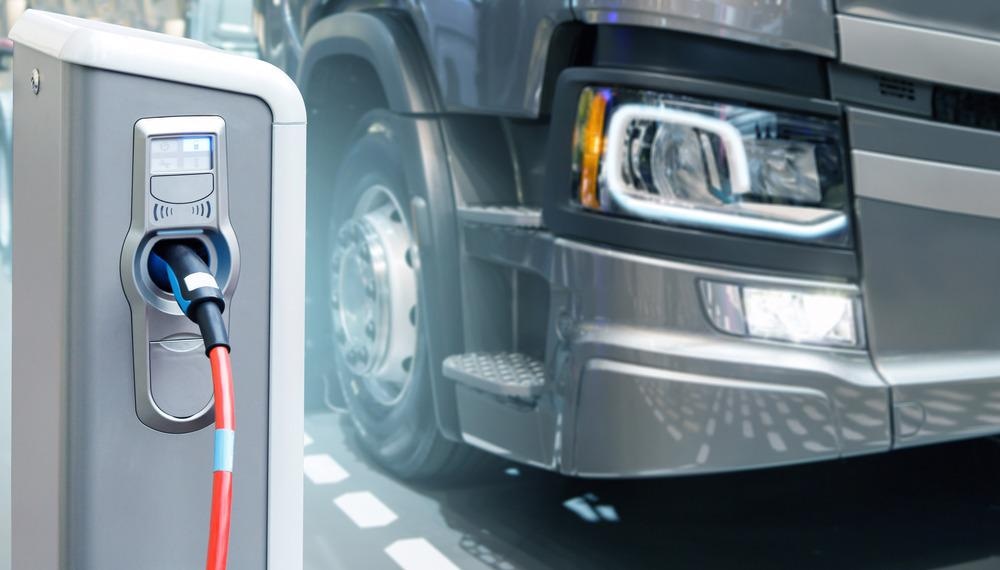.jpg) By Susha Cheriyedath, M.Sc.Reviewed by Skyla BailyNov 15 2021
By Susha Cheriyedath, M.Sc.Reviewed by Skyla BailyNov 15 2021A group of researchers has recently investigated the economic viability of green hydrogen in electric vehicles (EVs) for road transportation in China, published in the journal Energy Policy.

Study: The economic feasibility of green hydrogen and fuel cell electric vehicles for road transport in China. Image Credit: Scharfsinn/Shutterstock.com
The study was swayed by the new policy of the Chinese central government to develop green hydrogen energy-based fuel cell applications in the public sector road transportation.
The primary focus of the team was to develop quantitative models for economic assessment of the production of hydrogen from renewable energy, to estimate the carbon emission in the process and supply chain, and cost and associated safety concerns during storage and transportation.
What is Driving the Chinese Energy Sector Towards Green Hydrogen?
Hydrogen can be produced from a variety of resources, such as nuclear power, natural gas, biomass, solar, and wind energy. Hydrogen’s energy density is the same as that of gasoline but has higher fuel economy than gasoline or diesel engine vehicles, and refueling is relatively faster than other powertrain engine vehicles.
Hydrogen fuel cell vehicles are immune to snow-bound traffic, they suffer no ill effects from the cold or range, and performance remains unaffected. Additionally, they deliver minimum carbon emissions, even better than battery-based electric vehicles. These qualities make hydrogen a profitable fuel option for transportation and electricity-generation applications.
The future competition for hydrogen-based fuel cells comes from battery-based energy storage systems. China is a leading producer of Li-ion batteries and a global market driver for future lithium-based battery technology because of its large lithium reserves.
However, these batteries have some shortcomings, which include high capital cost, short lifetime, and a limited storage capacity with gradual degradation of service life over time. Additionally, it is not proven to be a viable solution for China’s plan for large-scale storage of renewable energy.
Hydrogen is a necessary component of China’s future clean energy plans. Both China’s National Development and Reform Committee’s (2019) report and State Council’s 13th five-year plan strategy highlighted sustainable policies for hydrogen energy harvesting.
How the Study was Carried Out?
The study segregated the hydrogen supply chain into three parts viz. upstream: hydrogen production, mid-stream: transportation and delivery of hydrogen, and downstream: applications of hydrogen as energy.
Then, several quantitative models were applied to measure the carbon emission of the hydrogen supply chain and that of the fuel cell EVs in kg of CO2/km, cost of hydrogen for renewable energy storage in $/kg of H2, and total cost of ownership for operating fuel cell EVs in $/km for each part of the supply chain individually.
What Did the Survey Find?
Hydrogen produced from coal has the lowest cost followed by natural gas and electrolysis of water using renewable resources, while it costs the highest if grid electricity is used.
Read More on Regional Electric Vehicle Use: California's Fuel Cell Electric Vehicle Future
Moreover, the estimated cost of hydrogen transportation was the least for liquified hydrogen and liquid organic hydrogen carrier (LOHC) followed by compressed hydrogen trailer, and transportation through the pipeline. Also, the overall cost of a fuel-cell EV is higher than that of conventional gasoline- or diesel-powered vehicle of the same class.
The group suggested that when the manufacturing cost of the fuel cells and hydrogen supply will decrease by 35%, hydrogen energy and fuel cell EVs can become more economically viable.
Considering the data from carbon emission from the hydrogen supply chain, electricity produced by solar PV, and supplied in most pathways, such as pipeline, compressed hydrogen, and LOHC present the lowest levels of carbon dioxide emissions among all other powertrain technologies.
Although the ground reality in China's hydrogen energy storage is not economically competitive yet, due to the regulated pricing of electricity in China, the government is currently providing substantial subsidies for passenger fuel cell vehicles which makes hydrogen highly competitive with other fuels.
The current common retail hydrogen prices at hydrogen refilling stations operating in China is around $12.2/kg, that is without considering government subsidies. However, that is not the case when it comes to fuel cell buses, trucks, and other commercial vehicles.
Optimizing Charging of Electric Vehicles (EVs) in Commercial Parking
The government should support more in the research and development of these technologies, while the industrial supply chains are critical to reducing the capital cost. Moreover, additional fuel taxes on conventional fossil fuels, carbon tax, and carbon emission trading could also significantly improve the competitiveness of clean or zero-emission hydrogen energy.
Reference:
Yanfei Li et al., The economic feasibility of green hydrogen and fuel cell electric vehicles for road transport in China, Energy Policy, Volume 160, January 2022, 112703, https://www.sciencedirect.com/science/article/pii/S0301421521005681?via%3Dihub
Disclaimer: The views expressed here are those of the author expressed in their private capacity and do not necessarily represent the views of AZoM.com Limited T/A AZoNetwork the owner and operator of this website. This disclaimer forms part of the Terms and conditions of use of this website.